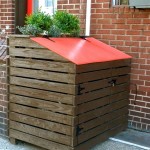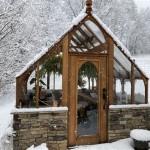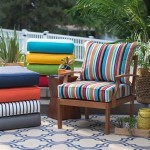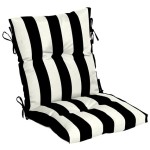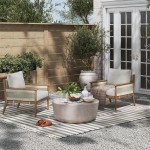Best Outdoor Kitchen Countertop Material
The selection of countertop material for an outdoor kitchen represents a critical decision influencing both the aesthetic appeal and functional longevity of the space. Unlike indoor countertops, outdoor surfaces are constantly exposed to the elements, including fluctuating temperatures, intense sunlight, moisture, and potential abrasion. Consequently, the chosen material must exhibit exceptional durability, weather resistance, and ease of maintenance. A variety of materials are available, each possessing unique characteristics that cater to specific design preferences, budgetary considerations, and performance expectations. Understanding the nuances of these materials is paramount for making an informed investment that yields lasting enjoyment.
Factors Influencing Countertop Material Selection
Several key factors should be carefully considered when selecting an outdoor kitchen countertop material. These encompass environmental exposure, durability, maintenance requirements, aesthetic preferences, and budgetary constraints. Ignoring any of these aspects can lead to premature deterioration, excessive upkeep costs, or dissatisfaction with the overall appearance of the outdoor kitchen.
Environmental Exposure: This represents perhaps the most critical consideration. Outdoor countertops are subjected to a wide range of environmental conditions, including direct sunlight, which can cause fading and discoloration; freeze-thaw cycles, which can lead to cracking and spalling; and precipitation, which can promote mold and mildew growth. The selected material must be capable of withstanding these stresses without compromising its structural integrity or aesthetic appeal. Materials prone to staining, such as certain natural stones, may require regular sealing and specialized cleaning to maintain their appearance.
Durability: Durability encompasses resistance to scratching, impact, and staining. Outdoor countertops often serve as work surfaces for food preparation and entertaining, requiring them to withstand the rigors of frequent use. Materials like concrete and certain types of natural stone offer high levels of durability, while others, like wood, are more susceptible to damage and require greater care. The anticipated usage level of the outdoor kitchen should be factored into the material selection process.
Maintenance Requirements: Different countertop materials necessitate varying levels of maintenance. Some materials, such as stainless steel, are relatively low-maintenance and require only occasional cleaning with soap and water. Others, like wood and certain natural stones, require periodic sealing to protect them from moisture and staining. The willingness to perform regular maintenance should be a key determinant in the material selection process.
Aesthetic Preferences: The countertop material should complement the overall design aesthetic of the outdoor kitchen and surrounding landscape. A wide range of colors, textures, and finishes are available to suit diverse design styles, from rustic to contemporary. The visual compatibility of the countertop with other outdoor elements, such as cabinetry, flooring, and landscaping, should be carefully considered.
Budgetary Constraints: The cost of outdoor kitchen countertop materials can vary significantly, from relatively inexpensive options like concrete to more premium choices like high-end natural stones. It is important to establish a budget prior to beginning the selection process and to consider the long-term cost of ownership, including maintenance and potential repairs. Balancing aesthetic desires with budgetary realities is crucial for making a sound investment.
Common Outdoor Countertop Materials and Their Properties
A diverse range of materials is available for outdoor kitchen countertops, each with its own unique set of properties, advantages, and disadvantages. Understanding these characteristics allows for a more informed decision-making process.
Concrete: Concrete countertops offer exceptional durability and versatility. They can be custom-cast in a variety of shapes, sizes, and colors, allowing for a high degree of design flexibility. Concrete is also relatively heat-resistant and can withstand the rigors of outdoor use. However, concrete is porous and requires sealing to prevent staining and moisture absorption. It can also be prone to cracking, particularly in colder climates, if not properly reinforced and sealed. The weight of concrete can also necessitate a robust support structure.
Natural Stone (Granite, Soapstone, Slate): Natural stone countertops, such as granite, soapstone, and slate, offer a timeless aesthetic and exceptional durability. Granite is particularly popular for its resistance to heat, scratching, and staining. Soapstone is known for its non-porous surface and resistance to heat and chemicals, making it ideal for food preparation areas. Slate offers a unique texture and color variation, adding a touch of natural elegance to outdoor spaces. However, natural stone can be expensive and may require periodic sealing to maintain its appearance and prevent staining. The porosity varies among different types of natural stone, impacting the frequency of sealing required.
Tile (Porcelain, Ceramic): Tile countertops offer a cost-effective and versatile option for outdoor kitchens. Porcelain tile is particularly well-suited for outdoor use due to its high durability, water resistance, and resistance to fading. Ceramic tile is also a viable option, but it is generally less durable than porcelain. Tile countertops are available in a wide range of colors, patterns, and textures, allowing for a high degree of customization. However, the grout lines between tiles can be prone to staining and require regular cleaning and sealing. The installation process can also be more labor-intensive than with other countertop materials.
Stainless Steel: Stainless steel countertops offer a sleek, modern aesthetic and exceptional durability. They are heat-resistant, stain-resistant, and easy to clean. Stainless steel is also non-porous, making it a hygienic choice for food preparation areas. However, stainless steel can be prone to scratching and denting, and it can also reflect sunlight, creating glare. The cost of stainless steel can also be higher than some other countertop materials. The industrial appearance may not appeal to all design preferences.
Wood (Teak, Ipe): Wood countertops offer a warm, natural aesthetic and can add a touch of rustic charm to outdoor kitchens. Teak and Ipe are particularly well-suited for outdoor use due to their natural resistance to moisture, rot, and insects. However, wood countertops require regular sealing and maintenance to prevent warping, cracking, and staining. They are also more susceptible to scratching and damage than other countertop materials. The longevity of wood countertops depends heavily on the quality of the wood and the frequency of maintenance.
Quartzite: Quartzite is a naturally occurring metamorphic rock that is known for its durability and beauty. It resembles marble in appearance but is significantly harder and more resistant to etching and staining. Quartzite is heat-resistant and can withstand the rigors of outdoor use. While quartzite is a great choice for outdoor countertops, it's important to note that there are different types of quartzite, and some may be more porous than others. It's crucial to select a dense, non-porous variety and seal it properly to protect it from the elements. It can be slightly more expensive than granite but the durability makes it a strong contender.
Outdoor Rated Compact Laminate: These laminates are specifically designed for outdoor use, possessing enhanced moisture resistance and UV protection compared to standard laminates. They offer a wide array of designs and are generally more affordable than natural stone options. However, they may not possess the same level of heat resistance as some other materials and are prone to scratching under heavy use. Choosing a specific outdoor rated compact laminate is important to ensure it meets the demands of outdoor environments.
Key Considerations for Installation and Maintenance
Proper installation and regular maintenance are crucial for maximizing the lifespan and performance of outdoor kitchen countertops. Neglecting these aspects can lead to premature deterioration, increased maintenance costs, and dissatisfaction with the overall appearance of the outdoor kitchen.
Installation: Proper installation is essential for ensuring the stability and longevity of outdoor countertops. The countertop should be installed on a level and stable base, and all seams should be properly sealed to prevent moisture penetration. The installation process may vary depending on the countertop material, and it is often best to hire a professional installer to ensure that the job is done correctly. Adequate support is crucial, particularly for heavy materials like concrete and natural stone.
Sealing: Many outdoor countertop materials, such as concrete and natural stone, require periodic sealing to protect them from moisture and staining. The frequency of sealing will depend on the porosity of the material and the level of exposure to the elements. It is important to use a high-quality sealant that is specifically designed for outdoor use. Following the manufacturer's instructions for application is crucial for optimal performance. Reapplication may be needed every one to two years, or as needed based on wear and tear.
Cleaning: Regular cleaning is essential for maintaining the appearance of outdoor countertops. The cleaning method will vary depending on the countertop material, but generally, a mild soap and water solution is sufficient for removing dirt and grime. Harsh chemicals and abrasive cleaners should be avoided, as they can damage the surface of the countertop. Promptly cleaning up spills is essential to prevent staining.
Winterization: In colder climates, it is important to take steps to protect outdoor countertops from freeze-thaw damage. This may involve covering the countertops with a waterproof tarp or storing them indoors during the winter months. Properly preparing the countertop for winter can significantly extend its lifespan and prevent costly repairs. Removing any standing water and ensuring proper drainage is also key.

What S The Best Material For Outdoor Kitchen Countertops Hgtv

What Is The Best Countertop For An Outdoor Kitchen

Your Guide To The Top Outdoor Kitchen Countertop Materials

Outdoor Kitchen Countertops L Trex Kitchens

Discover The Premium Choice For Outdoor Kitchen Countertops

Top 7 Outdoor Kitchen Countertop Ideas

What Is The Best Countertop For An Outdoor Kitchen Academy Marble

6 Outdoor Kitchen Countertop Options The Family Handyman

What Are The Best Outdoor Kitchen Countertop Materials

Discover The Best Materials For Outdoor Kitchen Countertops Stonelink Marble Granite

